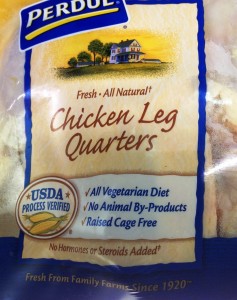Last week during the rollout of all the accomplishments of Let’s Move!, I wrote enthusiastically about one of them: universal school meals.
I pointed out that schools in which 40% or more of children are eligible for free or reduced-price meals will now be permitted to serve free breakfasts and free lunches to every student in the school, regardless of family income. Oops.
And I said: This program, which will affect 22,000 U.S. schools and 9 million children, is cost-neutral. Oops again.
Ain’t necessarily so, not so simple, it’s complicated—objected four readers who know a lot more about the arcane rules for school meal reimbursement.
- My first error: the 40% refers only to kids eligible for free meals, not reduced-price.
- Second error: because of the reimbursement formula used by USDA, cost-neutrality does not kick in until 60-65% of the kids are eligible for free meals.
Let’s hope I get it right this time.
Readers explained that the Healthy, Hunger-Free Kids Act of 2010 authorized a Community Eligibility Provision. This allowed schools serving mostly low-income children to serve all meals to all children at no cost.
USDA reimburses the schools using a formula based on the percentage of students identified as eligible for free meals as certified by some other means-tested program such as SNAP or being homeless.
USDA rolled the program out gradually in pilot projects. Seven states participated in 2013.
The idea was that if the pilot projects were successful–which they were–the program would be available to all states by 2014-15.
My take: school districts with lots of low-income kids ought to be doing this, but making the programs pay for themselves requires high levels of outreach and involvement.
Advocates:
- Get your school districts to apply.
- Work with the schools to make the food so good that all kids will want to eat it.
- Tell USDA you want to get rid of the complications: authorize universal meals for all school children
A challenge? Yes, but worth it.
As I pointed out, universal school meals put an end to:
- USDA paperwork requirements for ensuring eligibility.
- Parents having to fill out complicated eligibility forms.
- Schools having to monitor to make sure kids’ families have turned in the paperwork or paid.
- Schools turning away kids whose families haven’t paid.
- Schools destroying the meals of kids whose families haven’t paid.
- Students knowing who gets free meals, and who does not.
These new rules are a step in that direction and deserve advocacy support.



